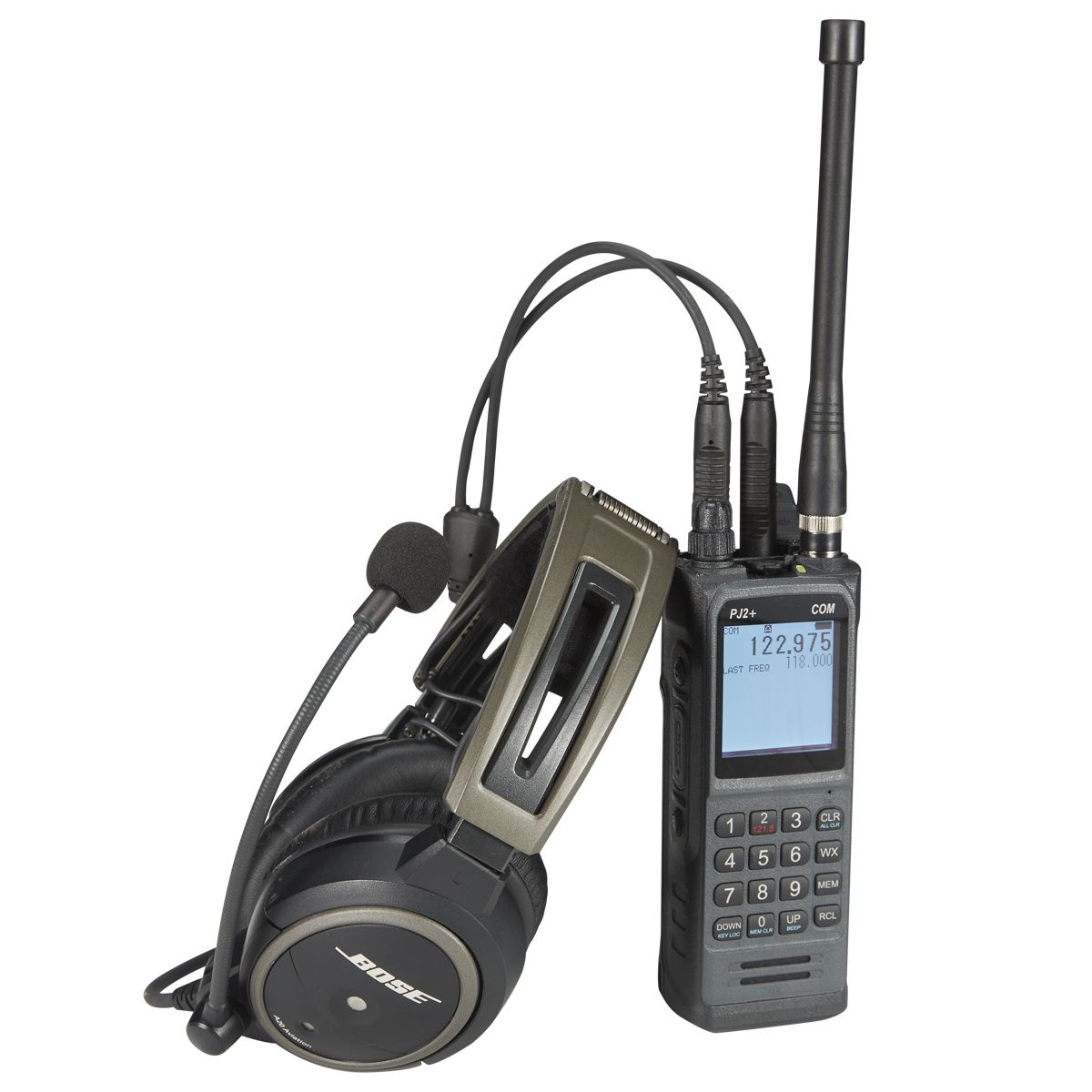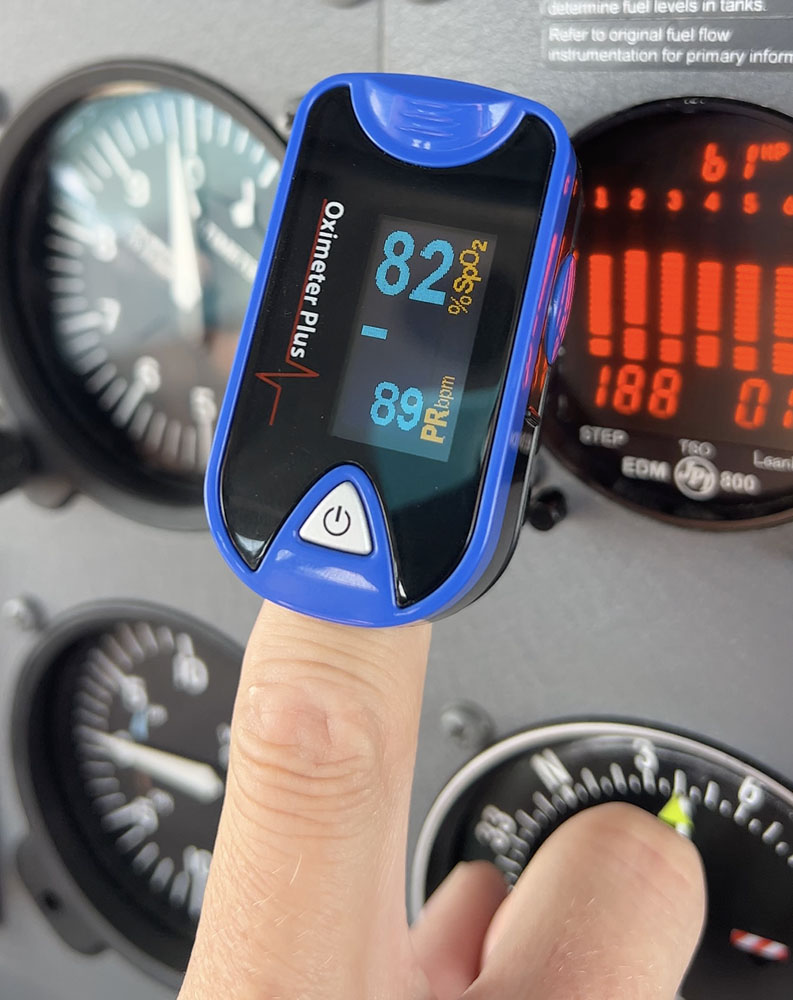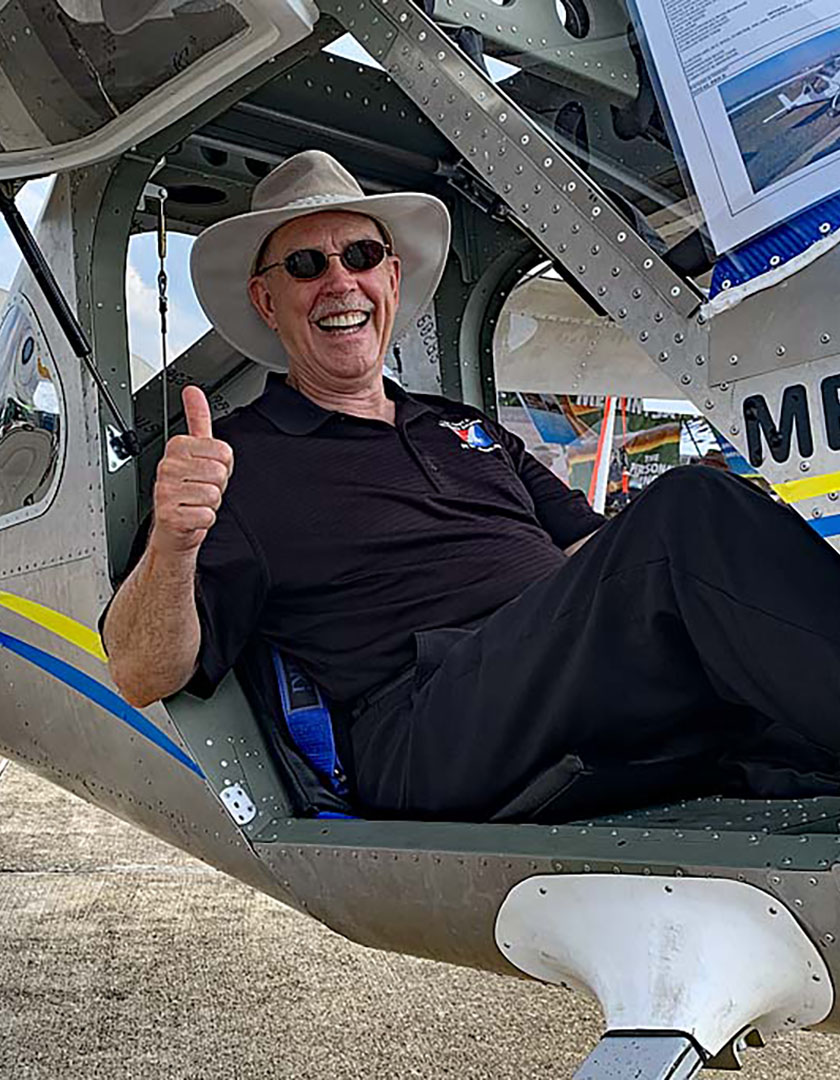Many pilots like to use an aviation scanner to listen to traffic in their local area, but reception of airband can be difficult for some people as many factors affect how much traffic you are able to receive. Here are three ways you can maximize the reception of your airband radio.
 1. Location, Location, Location
1. Location, Location, Location
Transmission reception is highly dependant upon line of sight. When we are flying around at 10,000 feet, there are very few obstructions that our transmissions have to deal with. This makes reception very easy. On the ground, trees, buildings, hills, power lines, etc. can affect incoming radio waves, making reception difficult. Here at Sporty’s, a receiver in the window can pick up an incoming aircraft from 10 miles out in one direction. But since there is a massive warehouse in the other direction, the same receiver won’t pick up traffic in the pattern that happens to be behind our building. The rule of thumb: the higher you can get the antenna, the better. The same receiver that was picking up 10 miles in one direction would pick up 20 miles in all directions when we moved up to our control tower, with unobstructed views.
2. Bigger is better - most of the time
Not all antennas are made equally. Some are tuned for specific bands, while others are set up to receive a wide swath of radio signals. Most aviation antennas are the latter. The most popular antennas used for scanners are referred to as discone antennas. These have lots of arms radiating out in many directions and are normally mounted above the roof of your building. While this will certainly pick up more than a single wire antenna, don’t expect four times the reception distance. We’ve found that location is much more important than antenna type.
3. Minimize interference
As long as you don’t mind a whole lot of cursing, you should ask an avionics technician about radio interference. Most radio shops have hundreds of stories about trying to chase down that annoying little pulsing hum in a 1963 Piper Aztec, only to find that the shielding on the wire used to install a cigarette lighter plug wasn’t sufficient so when charging an iPad with the screen on while using a cheap USB wire with a non-grounded adapter... created interference (it’s normally not just one thing, but a combination). Sporty’s has the luxury of having an avionics shop right here on our field, so after the tirade of profanities and the two hours of crazy stories, we came up with the top 5 things that can create interference with ground based receivers:
- Computers, phones
- Fluorescent light bulbs
- Plugs, especially AC/DC adapters
- Microwaves and appliances
- Motors
When in doubt, try to keep your receiver and antenna away from these items.
Want to improve reception with an external antenna? Here are our top 3 choices.
 Deluxe Base Station Antenna
Deluxe Base Station Antenna
This discone antenna is the most popular for roof mounting. Most people are mounting this to a steel pipe and running the wire down the middle. Note: the longer the wire, the more possibility for signal loss. Try to keep the distance from antenna to receiver under 50 feet.
Thru-Glass Mobile Antenna
These were designed for mobile use in a vehicle. The antenna mounts to the outside of a window with an adhesive pad. The opposite side is attached inside the vehicle. This works pretty well when the glass is relatively thin and you don’t want to permanently mount something on your car. Home use is hit or miss, as double-paned windows leaves a fairly large gap between the two pads.
Extension Cables
The best thing you can do to improve reception is improve your location: get higher. A simple extension cable and some zip ties will do wonders for improving your current antenna’s reception capabilities.
Shop all aviation radios and accessories



